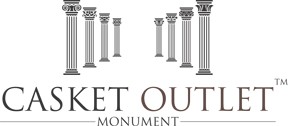No products
Product successfully added to quote!
Need Help?
Faq categories
Bronze Memorials: Timeless Durability Memorializing a Loved One
Bronze is a metal alloy that has been around for thousands of years. It was around 700 BC that the Romans advanced the use of bronze for many applications including weaponry, armor, furniture, cooking utensils and statuary used to memorialize the likes of gods, athletes and heroes. Over the centuries bronze has been phased out for many of these applications except for memorialization and art. A natural characteristic of bronze is that upon oxidation, it forms a greenish patina that is most desired among artists. Durability and the ability to weather well make it an ideal choice for cemetery memorials.
Many of the cemeteries and memorial parks across the country are moving toward requiring bronze memorials as the only form of memorialization allowed in the cemetery. They reason it is to preserve the look of the landscaping and it is easier to maintain the grounds when all cemetery memorials are at lawn level.
Benefits of Bronze
Outside of the cemetery requirements, there are some real benefits to using bronze as a memorial to mark the grave of a loved one.
First – the casting process allows intricate details and fine artwork to be incorporated into the designs. Most bronze memorial manufacturers have pre-designed templates from which you can add lettering, dates and emblems to personalize the memorial. All of these templates allow for a future date of death to be added in the form of a bronze death date scroll if it is for a companion memorial and one of the persons is still living.
Second - bronze is a very durable alloy. If you have ever seen centuries old public statuary made from bronze, you will observe that they remain virtually unchanged except for the coloring. Bronze is very good at maintaining its shape for centuries and therefore makes an excellent medium for cemetery memorialization.
Third - current manufacturing techniques have made bronze an affordable option for memorialization. Additionally, recent technology now makes it possible to take photographs and create a bronze memorial that is a collage highlighting key moments in one’s lifetime.
Types of Bronze Memorials
While the application of bronze for memorialization is in wide use, there are not too many different types of memorials made from this ancient alloy.
Bronze Plaques – consist mainly of a plate made from bronze in which a design, lettering, dates and some sort of inscription are cast on the surface. In most cemeteries the plaque is secured to either a granite base or in some cases a concrete foundation. Many bronze plaques are secured to a vertical surface such as an upright monument, statue pedestal or mausoleum crypt front. Versatility is a key factor in their wide use in cemeteries, architectural applications and signage.
Statuary – for centuries having been made from bronze, offers excellent testimony to its ability to withstand the elements of time and Mother Nature. In many of the greatest historical cities around the world, you can witness some truly amazing works of art showcased in museums and outdoor public places. Bronze statues can be seen in many cemeteries across the country. They are usually cast in the likeness of the person they are memorializing.
Cremation Urns – are made utilizing some of the very same techniques used to produce bronze statues. Bronze urns come in a wide variety of shapes and styles. Some are made as small statues with a hollowed out portion to contain the cremated ashes, while others are made from sheet bronze welded together creating geometric shapes.































